Some reflections on the 1911 Census
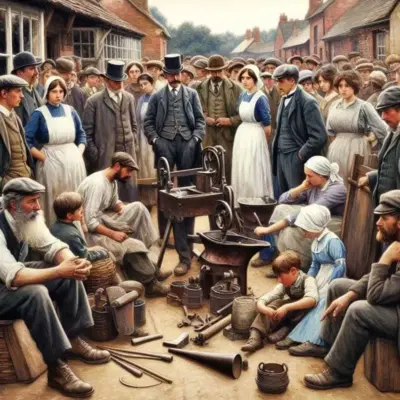
In 2019 Maxwell Meadows looked over the Census returns for 1911 (see data extract here) and reported as follows:
The 1911 Census took place on 2nd April 1911. West Bergholt came under
- Registration District of Lexden, number 199,
- Registration Sub-District Fordham, Number 3.
- The Enumeration District was 13 and 14.
- Registration Sub-District Fordham, Number 3.
As the Enumerator’s Summary Book states:
No dwelling or building within the Enumeration District was omitted. All persons living in the area were required to complete a return that included basic information about themselves and those living at the address. This included their name, age, number of children, living and deceased, and where each individual was born. In addition there was a column for recording the occupation of each individual in the household with further space for some additional information in this category.
Local Economic Activity & Wealth
Having studied the recorded occupation of all working persons within the catchment area, a tentative picture can be drawn up as to the local level of economic activity. Equally the information from the Census can give us an idea of how wealth was distributed. Although the participants do not know it, we are about three years from the outbreak of World War One. The 1911 Census information for West Bergholt reflects the society at that time.
Majority Manual Occupations
As will be seen the majority of the villages’ inhabitants were on the lower rungs engaged in manual occupations primarily linked to the land. However, we do have residents who could be termed middle class. There is also evidence of newer and more technical employment starting to creep in too.
In addition it is interesting to note how gender roles were still prevalent when it came to employment. An attempt has been tried in an effort to make some broad understanding of the myriad of job titles used in the record, just under 200 in total. For example there are 15 types of labourer, 111 men out of an estimated total workforce of 537. Consequently broad scale groupings of occupations have been used.
Significance of Farming
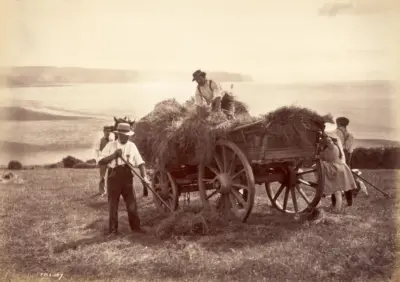
As noted above farming was a significant employer in the village. 55 men are recorded as farm labourers. A further 2 stated that they ‘’work on farm’’. However a significant sub-section were the ‘’horseman – farm’’ of which there were 15. In fact employment linked to horses in general included 44 men. They had occupations such as the harness makers (two), blacksmiths (three) or groom (six).
There was an interesting double job title that eight individuals recorded, ‘groom and gardener’. There were two horse slaughters listed. Other occupations on the land included a farm foreman, three farm bailiff’s, two cowmen, a stockman and a dairyman.
Farmers
With regard to farmers there were five not including ‘farmer – poultry and general’, ‘farmer-cattle dealer’ and ‘farmer – dairyman’. Perhaps the villages two wheelwrights should be classed under this section too. Another significant area of work was in gardening. There seem to be two distinct strands. There was general gardening work, twenty-one individuals described themselves as such. However, there was a rose-growers locally too. Specifically this included the manager (rose-garden), a clerk, four who described themselves as ‘nursery hand – rose-grower’, another four as ‘nurseryman – labourer’ with a further three recorded as ‘labourer – rose-growers’.
More General Roles also on the Land
On a more general basis individuals recorded their employment as wattle-maker, woodman, thatcher, thatcher and hay binder, hay-cutter, hay-cutter assistant and hay trusser. From this it can be seen that a significant part of the village’s economic activity was focused on employment on the land.
The Brewery
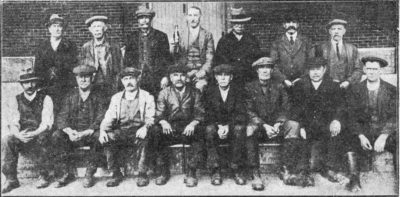
However, another major employer, as many will be aware, was the brewery. This one particular employer included a wide variety of roles. Out of a total of 57 individuals there were twenty-three men who reported that they were ‘labourers-brewery’. In addition eight recorded they were ‘draymen’, five ‘carmen’, four ‘clerks’ and three ‘maltsters’. There was also a ‘malt grinder’ and an individual who stated his occupation as ‘brewing sciences – brewer and maltster’ together with a person who specified that his job was ‘steaming casks at brewery’.
The mechanization of the business was also evident in the job titles used on the Census form – engineer (one), stoker (one) and engine driver (two). On site also worked a carpenter, a painter and a store man. The director resided in the village as did two brewery managers.
Labourers & Engineers
Other predominantly outdoor labouring work recorded as being undertaken by locals in the village included builders (two), bricklayers (five) with two builders labourers and five bricklayers labourers. There were also six carpenters, two joiners, four painters, a house painter/decorator and a stone mason. The proximity of the Great Eastern Railway also had an impact on the local labour force. There was a blacksmith, two railway labourers, a bricklayers foreman, three railway platelayers and two who stated their occupation was ‘Permanent Way – GER’.
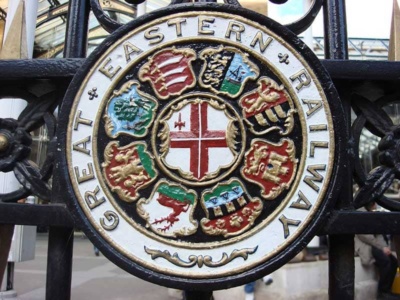
On a technical level West Bergholt was home to an ‘engine fitter (engineering)’ and a ‘stationary engineman’ as well as two ‘electric wire’ men and an electric worker.
Domestic Settings
Female employment appears to have been largely undertaken in a domestic setting. This is either within the individuals own home or in someone else’s. Unlike male occupations most of which took place in public, female work appears to have been conducted in a private setting. Perhaps it is this apparent divide that gave rise to the myth in some quarters that women did not work at this time.
The 1911 Census shows 26 different job titles. Being ‘in service’ of one sort or another was the major source of employment for local women. There were sixteen ‘housemaids – domestic’, five parlour maids, a ‘laundry maid’, ten ‘servants’, two who described themselves as ‘domestics’, three ‘charwomen’, seven cooks and twelve housekeepers. Caution needs to be exercised over the last category however, as in a number of cases this includes older daughters who appear to have stepped in to take over the running of a home in the absence of a mother.
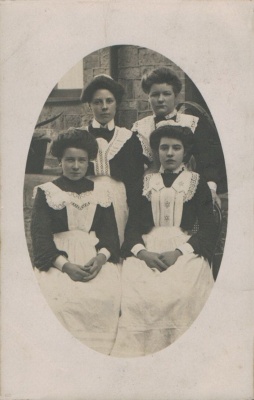
In one household the eldest daughter was described as ‘Mother’s Help’ while her slightly younger sibling was recorded as ‘house work’. Another young woman was assigned the job title ‘general help’ with three others being noted as ‘assists at home’. Two teenagers have their occupation down as ‘day girls’. There are instances where women are employed as assistants in a family business. A couple of examples of this are the farmer’s daughter whose record of employment is ‘dairywork’. Another is the wife at The Apple Tree who is down as ‘assists in business’ under her husband’s name. However, the largest single job-title group was ‘laundress’. Twenty-one women put this down as their occupation.
Some Women had professions
Not all women seem to have been stuck in the drudgery of housework though. A significant number of women were engaged in making clothes. There were eleven ‘dressmakers’ plus one apprentice and seven recording their occupation as ‘tailoress’. The village also had a ‘sewing machinist (tailoring)’, an individual who offered ‘sewing services’ and someone who did ‘draw thread work’. There was one ‘milliner’ in the village.
There are three nurses recorded on the Census. One appears to be living in the home of an elderly couple, another is down as a ‘domestic nurse’ in a household with a number of young children whilst the third is a ‘District Nurse’. Most intriguing is the 18 year old whose job is ‘Daily Governess in the Parish’. There was only one individual who stated her job was ‘House Wife’.
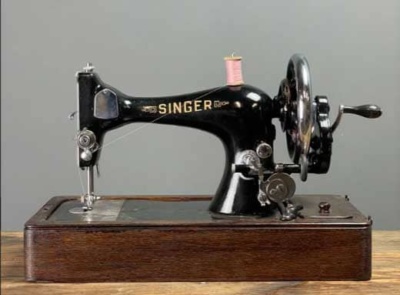
As noted virtually all the women’s work took place indoors. Nevertheless there are two notable exceptions. These were a mother and her 21 year old daughter, living on The Heath. They put down their job as ‘working on land’ clarifying this by adding ‘stone picking’.
Younger People
Mention should be made of jobs that were designated for younger people in West Bergholt, some have already been alluded to already such as ‘Day Girl’. This includes ‘engineer-apprentice’, ‘apprentice- general furnishing’, houseboy (Rectory), kitchen boy, office boy (Brewery), three errand boys, a bakers errand boy and a grocers errand boy. West Bergholt also had its very own ‘cowboy’ (on a farm not the American Prairie’s). Finally, four young men had the job of ‘caddie’.
The Village was ‘Self-Contained’
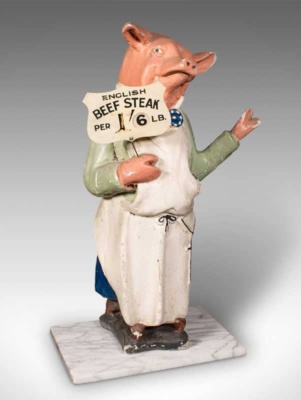
Judging by all the various services offered by individuals in the village it seems to have been largely self -contained. There were seven butchers but only one assistant butcher. A pork butcher but with two pork butcher assistants, a grocer also with two grocers assistants, six bakers, two bakers assistants, two milkmen, two recorded simply as ‘shop -keeper’, a fish-monger and a ‘poultry man’. There were also two individuals listed simply as ‘shop assistants’. However, we did have a Post Office manager with his assistant, a Postman as well as the wonderfully titled Rural Auxiliary Postman. In terms of pubs we had a ‘publican’ (The White Hart), and a ‘licenced victualler’ (The Treble Tile). The individual running The Apple Tree confusingly put himself down as ‘brewers labourer/ in keeper’. There was also a head cellar-man but it is not specified where he worked. Other occupations include a chimney sweep, carter (coal) plus two other carters. There was also wood-turner/coal merchant. The village had a bootmaker and two boot repairers.
Spiritual & Professional
Spiritually the village had the services of the Rector, a Baptist Minister and a Primitive Methodist Minister. In addition there was a police officer and a Medical Practioner.
With regard to others in the professional classes, the village was home to two clerks, a clerk (‘wholesale clothing’) and an individual whose job title was ‘Clerk under Education of Essex County Council’. In education we had a ‘school teacher (head master)’, three teachers, an infant school teacher plus an assistant school teacher. Other job titles include a two Insurance Agents, a Corn Seed Agent, ’Merchant Export Cotton Goods’, ‘Contractor (Lawn and Turf)’ with a ‘Contractor Assistant (Lawn and Turf)’. One individual simply put down ‘Stock Exchange’. In contrast another resident stated ‘Captain, (7th Dragoon Guards) Adjutant, Essex Yeomanry’. One final subsection in this category of those who put down under the employment section ‘Private Means’. This was a total of 16 individuals, 11 of whom were living in two separate households.
Retirees
Lastly it should be noted that West Bergholt had a number of individuals in retirement. At one end we had a retired groom, retired manservant and a retired stone mason. There were two retired farmers, a retired civil servant, a retired army officer, three on an army pension and one on a navy pension. There was also a police pensioner and an ‘Ex-Superintendent of Police’. The latter’s age was 93. Intriguingly another individual announced he was a ‘Pensioner (Royal Agricultural Society)’. Finally we had just a single ‘OAP’. It should be noted that only a single individual in the whole of the village put as their occupation ‘none’. From this perhaps we can assume that all the destitute had been cleared from the village to live behind the high and forbidding walls of the Lexden and Winstree Union Workhouse over in Stanway.
Conclusion
To conclude, the 1911 Census returns with regard to employment show that West Bergholt was overwhelmingly agricultural. The power applied was primarily human and equine. This includes not just farming but also a local rose-growing enterprise, general gardening and the application of on-going rural skills. The brewery was a major employer too. In addition we see the Great Eastern Railway supplying some employment. Equally we should not overlook the significant input of large scale female employment within the village despite a sense that it was somewhat hidden indoors. To a great degree West Bergholt was self-sufficient with numerous trades and services being supplied by local people. Although there is a sense that things are changing with a number of individuals having employment links outside the locality the impression is that West Bergholt’s economic basis in 1911 was firmly still in the Victorian era.
Maxwell Meadows
Go to page 2 to view the data.

